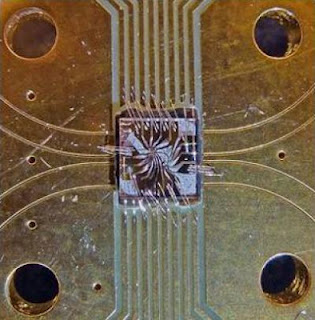(Santa Barbara, Calif.) –– A protocol for controlling quantum information pioneered by researchers at UC Santa Barbara, the Kavli Institute of Nanoscience in Delft, the Netherlands, and the Ames Laboratory at Iowa State University could open the door to larger-scale, more accurate quantum computations. Their findings, in a paper titled "Decoherence-protected quantum gates for a hybrid solid-state spin register," are published in the current issue of the journal Nature.
"Although interactions between a quantum bit ('qubit') and its environment tend to corrupt the information it stores, it is possible to dynamically control qubits in a way that facilitates the execution of quantum information-processing algorithms while simultaneously protecting the qubits from environment-induced errors," said UCSB physicist David Awschalom. He and his group were responsible for developing the electron and nuclear spins used as the quantum bits –– the quantum version of the computer bit –– in their demonstration and for helping to analyze the results.
Awschalom is director of UCSB's Center for Spintronics & Quantum Computation, professor of physics, electrical and computer engineering, and the Peter J. Clarke Director of the California NanoSystems Institute.
Dynamical protection of quantum information is essential for quantum computing as the qubits used for information processing and storage are highly susceptible to errors induced by interactions with atoms in the qubits' environment. The scientists' previous research has shown that quantum information stored in qubits can be effectively protected through successive control operations (rotations) on a qubit that filter out these unwanted interactions. However, these control operations also filter out the interactions between qubits that are essential for the realization of logic gates for quantum information processing. Thus, until recently, quantum information stored in protected qubit states could not be used for quantum computations.
These solid state spin systems also offer the added benefit of operating at room temperature, in contrast to other candidate qubit systems which operate at only at a fraction of a degree above absolute zero.
"This demonstration of performing a quantum algorithm at the subatomic level with single spins suggests a pathway to build increasingly complex quantum machines, using qubit control protocols that circumvent the expected limitations from real materials," said Awschalom.
###
Contact: Sonia Fernandez sonia.fernandez@ia.ucsb.edu 805-893-4765 University of California - Santa Barbara












1 comment:
Your are doing great work. your are providing an amazing information through your blog. I love going through your blog
Thanks and Keep Sharing :)
Post a Comment